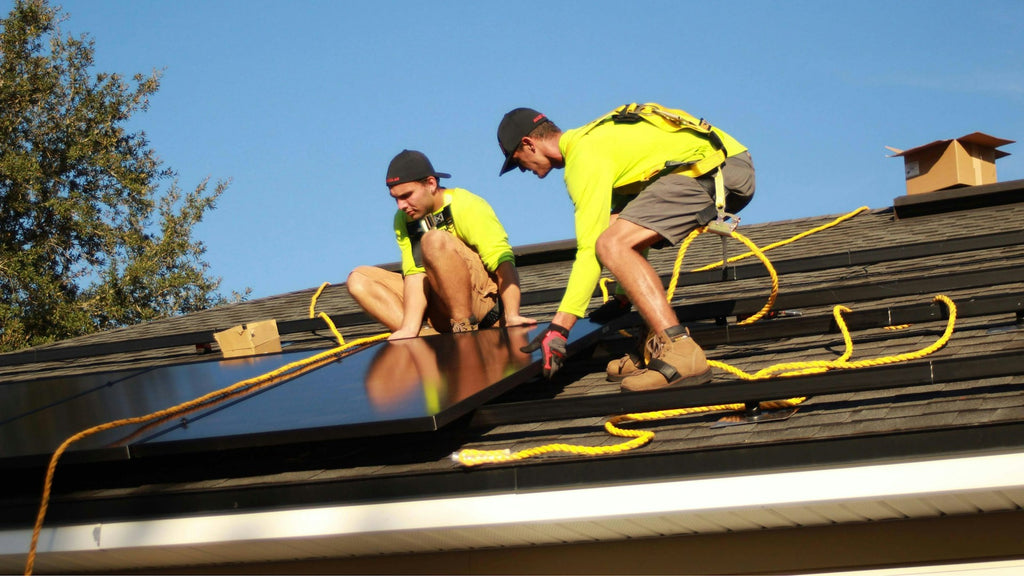
What Size Solar Inverter Do I Need for My Home?
Introduction
When investing in a solar power system for your home in Germany, selecting the right solar inverter is crucial to ensure optimal performance and energy savings. A solar inverter is responsible for converting the direct current (DC) electricity generated by your solar panels into alternating current (AC) electricity, which is compatible with your home's electrical grid and appliances. Choosing an inverter that is properly sized for your specific solar panel system and energy needs is essential for maximizing efficiency and avoiding potential issues such as underperformance or overloading.
A Quick Look Sheet:
| Household Type | Approx. Area | Number of Occupants | Recommended Solar Panel System | Recommended Inverter Size | Applications |
|---|---|---|---|---|---|
| Small Household | Up to 50 m² | 1-2 | 3-4 kW | 3-4 kW |
Suitable for single apartments or small flats, ideal for low to medium electricity needs.
|
| Medium-Sized Household | 50-100 m² | 3-4 | 5-8 kW | 5-8 kW |
Fits well with independent homes or larger apartments, designed for average to above-average power usage.
|
| Large Household | 100+ m² | 5+ | 10+ kW | 10+ kW |
Best for large residences with multiple bedrooms, catering to high electricity demands and providing capacity for future expansion.
|
Factors to Consider When Sizing a Solar Inverter
To determine the ideal solar inverter size for your home, consider the following factors:
- Solar panel system size and wattage: The power output of your solar panels, measured in kilowatts (kW), is influenced by several factors, including their size, efficiency, and the average sunlight hours your location receives. In Germany, the sunlight hours vary between 2.5 to 3.5 per day, impacting the daily energy production of your solar panels. For instance, a 5 kW system could generate between 12.5 to 17.5 kWh daily. Accurately estimating this output is crucial for selecting an inverter that can efficiently handle this energy production without underutilizing or overloading the system.
- Expected energy consumption: AnalyzE your electricity bills to gauge your average daily and monthly energy use, typically listed in kilowatt-hours (kWh). In Germany, an average household consumes about 3,500 kWh yearly. However, this figure can vary based on the size of your household and your lifestyle. For a more accurate measurement, list all electrical appliances and estimate their usage over a typical day and month.
- Future expansion plans: If you anticipate expanding your solar panel system in the future, choose an inverter with additional capacity to accommodate growth without the need for a costly upgrade.

Calculate the Required Solar Inverter Size
To calculate the appropriate inverter size, follow these steps:
- Determine the total wattage of your solar panel system by multiplying the number of panels by their individual wattage rating.
- Apply the inverter efficiency factor, which typically ranges from 0.9 to 0.95. Divide the total solar panel wattage by the efficiency factor to account for potential energy losses during the conversion process.
- Add a safety margin of 10-20% to the calculated value to ensure the inverter can handle peak power output and prevent overloading.
Solar Inverter Types and Their Impact on Size Selection
There are three main types of solar inverters, each with unique characteristics that influence size selection:
- String inverters: These centralized inverters are suitable for homes with uniform solar exposure and minimal shading. The required inverter size is determined by the total wattage of the connected solar panel strings.
- Microinverters: Installed on each individual solar panel, microinverters offer enhanced performance in systems with partial shading or varying roof orientations. The inverter size is matched to the wattage of each solar panel.
- Power optimizers: These devices are paired with a central inverter and provide panel-level optimization. The inverter size is based on the total system wattage, while the power optimizers help mitigate the impact of shading and panel mismatch.

By considering factors such as solar panel wattage, energy consumption, and future expansion plans, you can accurately determine the appropriate inverter size. Additionally, understanding the different inverter types and their impact on size selection will help you make an informed decision.
To ensure the best results, consult with a professional solar installer who can assess your specific needs and recommend the most suitable inverter for your German household. With the right inverter in place, you can maximize your energy savings and enjoy the benefits of clean, renewable solar power for years to come.

Leave a comment